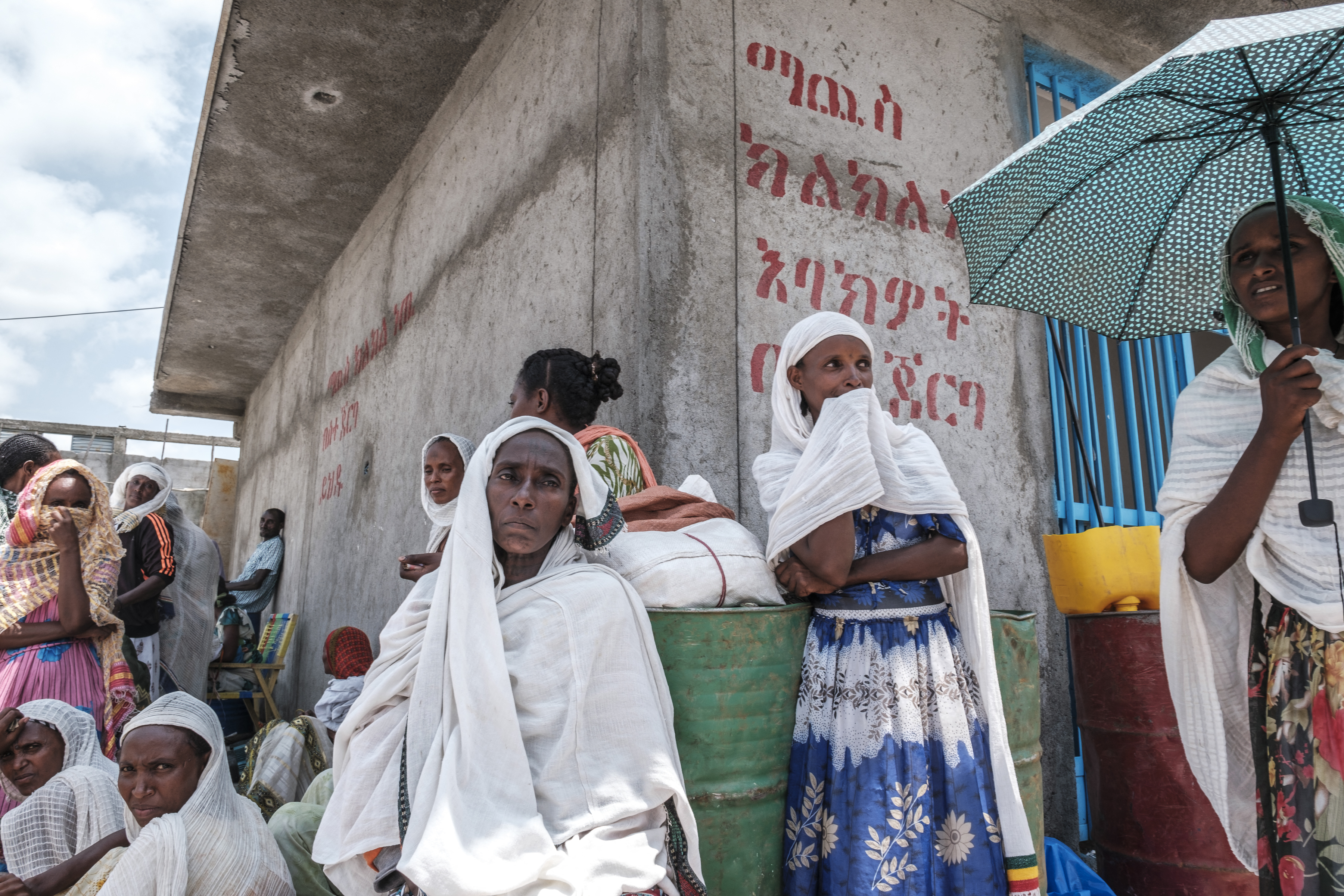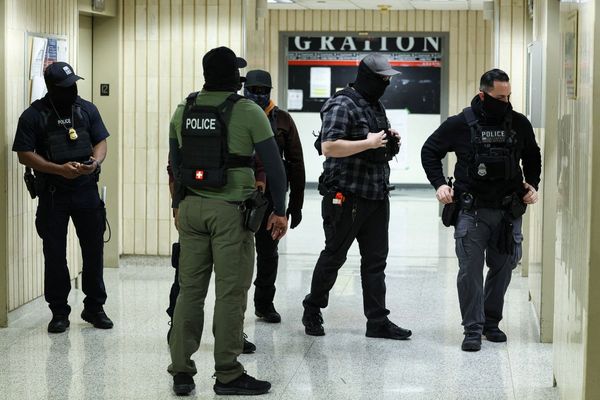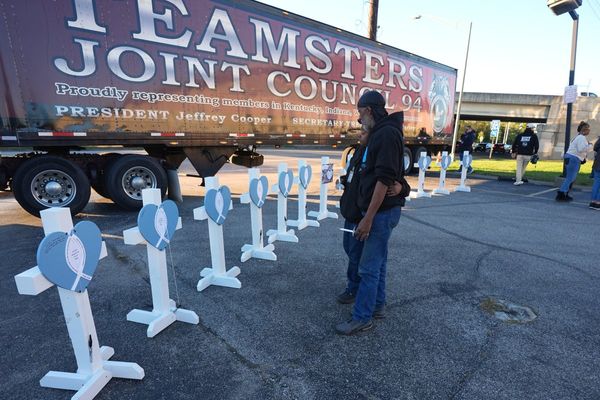
On November 2, 2022, when an agreement between the Ethiopian government and the Tigray People’s Liberation Front (TPLF) ended a brutal two-year war, Wekeynos Guesh was relieved.
Life had been upended in Tigray, the northernmost region of Ethiopia, when Prime Minister Abiy Ahmed sent federal troops and allied fighters from the neighbouring Amhara region and Eritrea there in November 2020.
By the second week of the war, Wekeynos, then 29, had fled his hometown of Humera and trekked for days with relatives as they braved a scorching sun and hunger to reach a camp for internally displaced people (IDP) in Mekelle, Tigray’s capital and Ethiopia’s second-largest city. Other relatives fled to refugee camps in eastern Sudan, where they still reside amid hardship compounded by that country’s own civil war.
In all, an estimated 1.8 million people were displaced in the course of Ethiopia’s conflict, according to the United Nations. The death toll remains unclear. In January, former Nigerian President Olusegun Obasanjo, the African Union’s lead mediator in the peace talks, said as many as 600,000 people had died in the conflict.
At its peak in July 2021, Wekeynos joined the Tigrayan side as an infantryman after it recaptured Mekelle from Ethiopian forces. He was still on the front line 16 months later when the truce went into effect.
Since then, he has been fending for himself and more than a dozen relatives in Mekelle with small-scale trading and sales of music he composes for local artists.
But one year later, they still have not returned home.
Unable to go home
There were hopes among the displaced that after losing relatives, friends and property, full-scale rehabilitation of Ethiopia’s northernmost region could commence. One year on, many are disheartened about being unable to return to areas of Tigray controlled by forces allied with the federal government even though the fighting has ended.
Bank services and flights have resumed in the region, even if there are occasional complaints of informal limits to bank withdrawals and accusations of ethnic profiling of Tigrayan passengers.
In June 2021, the federal government suspended the payment of salaries to civil servants in Tigray. That has resumed, but the backlog from then through the formation of a regional administration in March this year, remains unpaid.
Wekeynos feels the truce saved him and his loved ones’ lives, but he is bitter about the continuous occupation of his home area by allied Ethiopian forces. Amharas, who consider western Tigray as their historical homeland, have been trooping into the region, he said.
He is also disappointed about not knowing the whereabouts of friends and relatives abducted from western Tigray and suspected to be languishing in secret prisons there or in Eritrea.
There are also other concerns.
Tigrayans comprise 6 percent of Ethiopia’s estimated 110 million people. For years, the Irob, a minority ethnic group with a distinct language, have lived among the Tigrayans. Now unable to return to their homes in eastern Tigray, the Irob, who number about 60,000, said the continued presence of federal allied forces poses an existential crisis to them.
“I have fears that our surviving population who can’t return to their home areas will be dispersed across Ethiopia as well as the wider world, causing the total disappearance of our language and culture,” said Muruts Hagos, a 24-year-old Irob from Alitena.
Muruts told Al Jazeera that Eritrean forces attacked the town in November 2020, looting and killing dozens of people. He now lives in a Mekelle camp with about 2,800 people displaced from western Tigray and said the promise of the truce has been replaced with dread of an uncertain future.
‘Limited aid’
The camp used to receive a monthly wheat ration from the World Food Programme (WFP), but then the UN suspended food aid to Ethiopia in June after reports of diversion of supplies. There have also been complaints about a lack of adequate shelters in the camps.
“We [are] currently surviving by begging for whatever scraps of food we find from host communities,” Muruts told Al Jazeera.
An employee of an international nonprofit working in northwestern Tigray, where there are 16 camps for tens of thousands of IDPs, told Al Jazeera that there are about 150 camps across Tigray.
The aid worker who spoke on the condition of anonymity due to the sensitivity of the issue said there were already complaints of irregular supplies of food and other aid, “especially for the large number of gender-based violence victims that come to our centres”.
Schools, where some IDPs have lived, have partly reopened to students after being closed for most of the war, so some of the displaced have become homeless again. According to the aid worker, some of the starving IDPs are now resorting to pickpocketing and burglaries in surrounding urban areas.
“Another factor is that IDPs in Tigray are competing for limited aid supplies with IDPs in other parts of Ethiopia, the Sudan crisis and most recently the Israel-Gaza conflict,” the aid worker said. “Aid capacity has been further greatly eroded currently with some overstretched aid agencies already cutting the number of staff they have.”
Waiting for justice
Analysts said the peace agreement may have silenced the guns but it has yet to resolve the trauma that the conflict created.
“There is a lack of proper safety and security for Tigrayan girls and women who have been and still continue to be exposed to sexual violence and harassment by both Eritrean and domestic forces,” said Kjetil Tronvoll, professor of peace and conflict studies at Oslo University and a Horn of Africa researcher.
Tronvoll said there is a lack of a clear timeframe and transition plan for peacetime as well as a lack of juridical accountability for atrocities perpetrated during the conflict.
In recent months, tensions have also been rising between Addis Ababa and its allies in the war – Eritrean forces and Amhara militia – and there have been power struggles within the ranks of the TPLF, which analysts suggest may have undermined full implementation of the ceasefire.
Suad Nur, a Horn of Africa campaigner at Amnesty International, said the disbanding of regional and other foreign bodies investigating rights violations in Ethiopia is emboldening perpetrators. She added that ongoing policy discussions backed by Addis Ababa on justice issues have prioritised reconciliation over accountability.
“The process must centre the interests of survivors and victims, providing a venue for their participation,” Suad told Al Jazeera.
Consequently, scepticism persists about whether perpetrators will be brought to justice in Ethiopia. As federal authorities are now engaged in a new conflict in Amhara, the country’s second most populous region, there are calls by rights groups like Amnesty International for perpetrators to be prosecuted under international law.
Legesse Tulu, the Ethiopian communications minister, did not respond to queries from Al Jazeera about the issues raised in this piece.
For now, Wekeynos has more immediate worries.
“On our part, Tigrayan fighters have been disarmed. … We’ve been told that currently, it’s the federal police and Ethiopian army personnel that are in control of western Tigray. If that’s the case, why can’t we return to our home areas?” Wekeynos asked.







